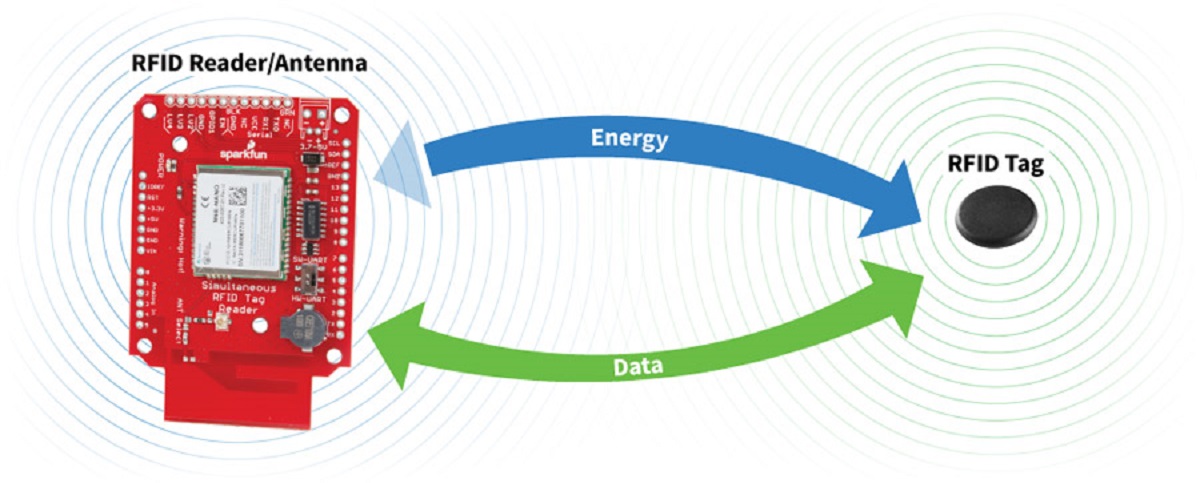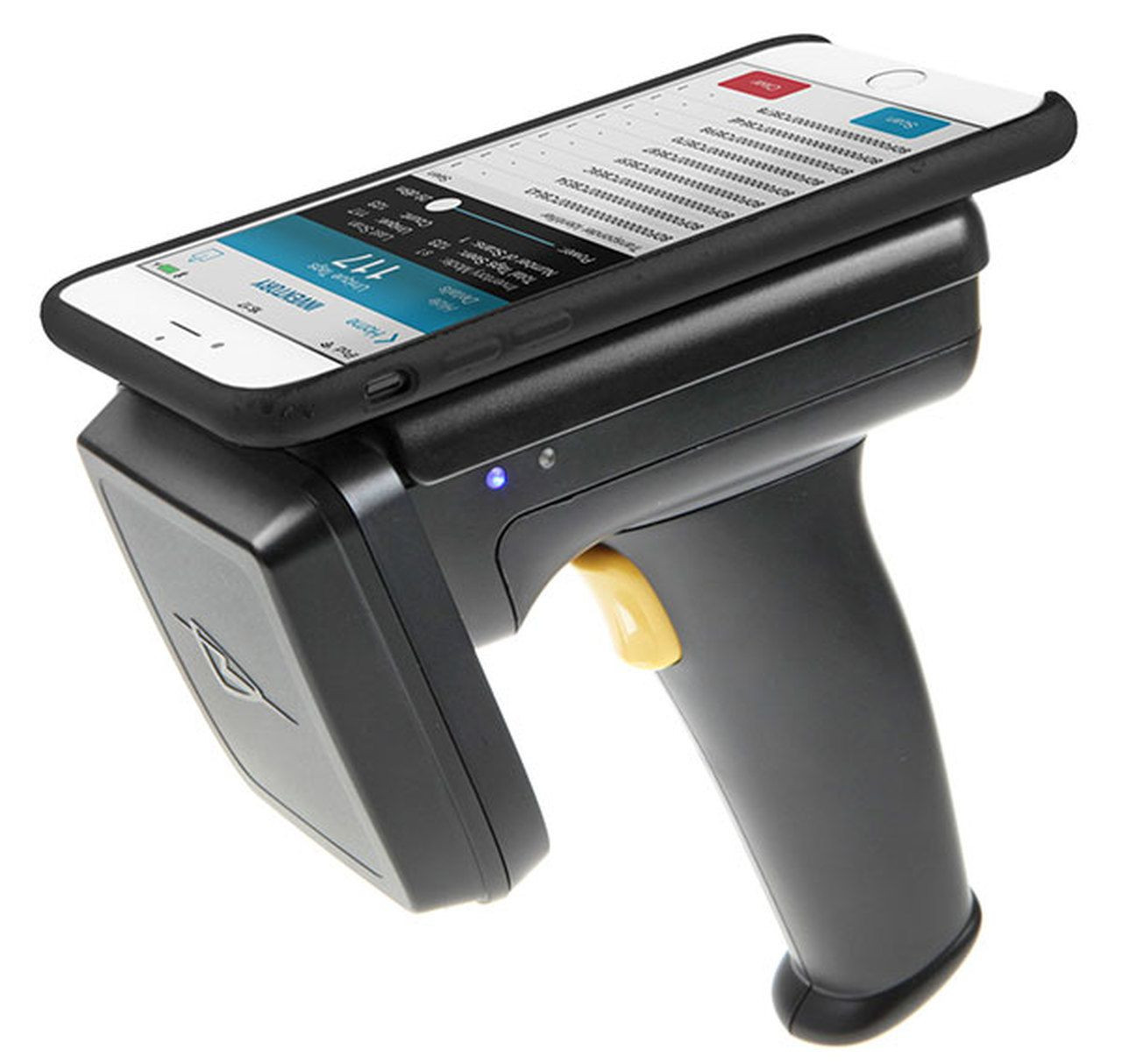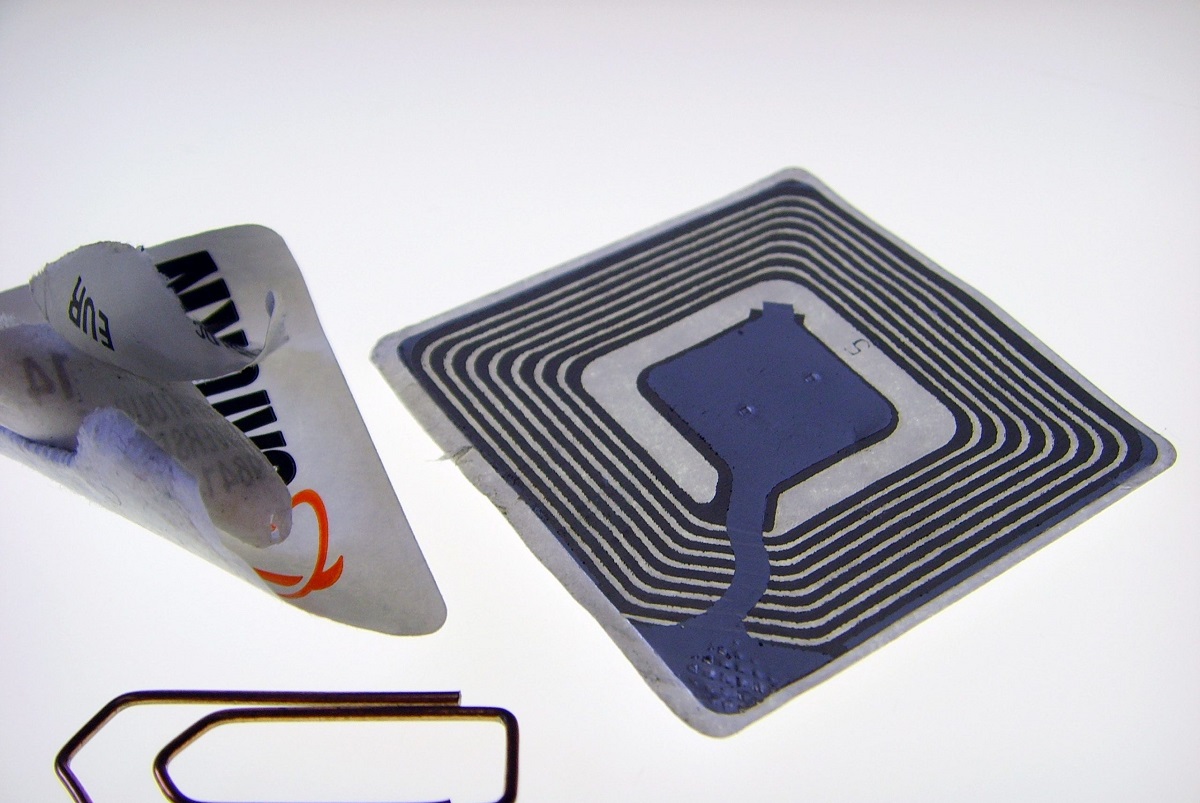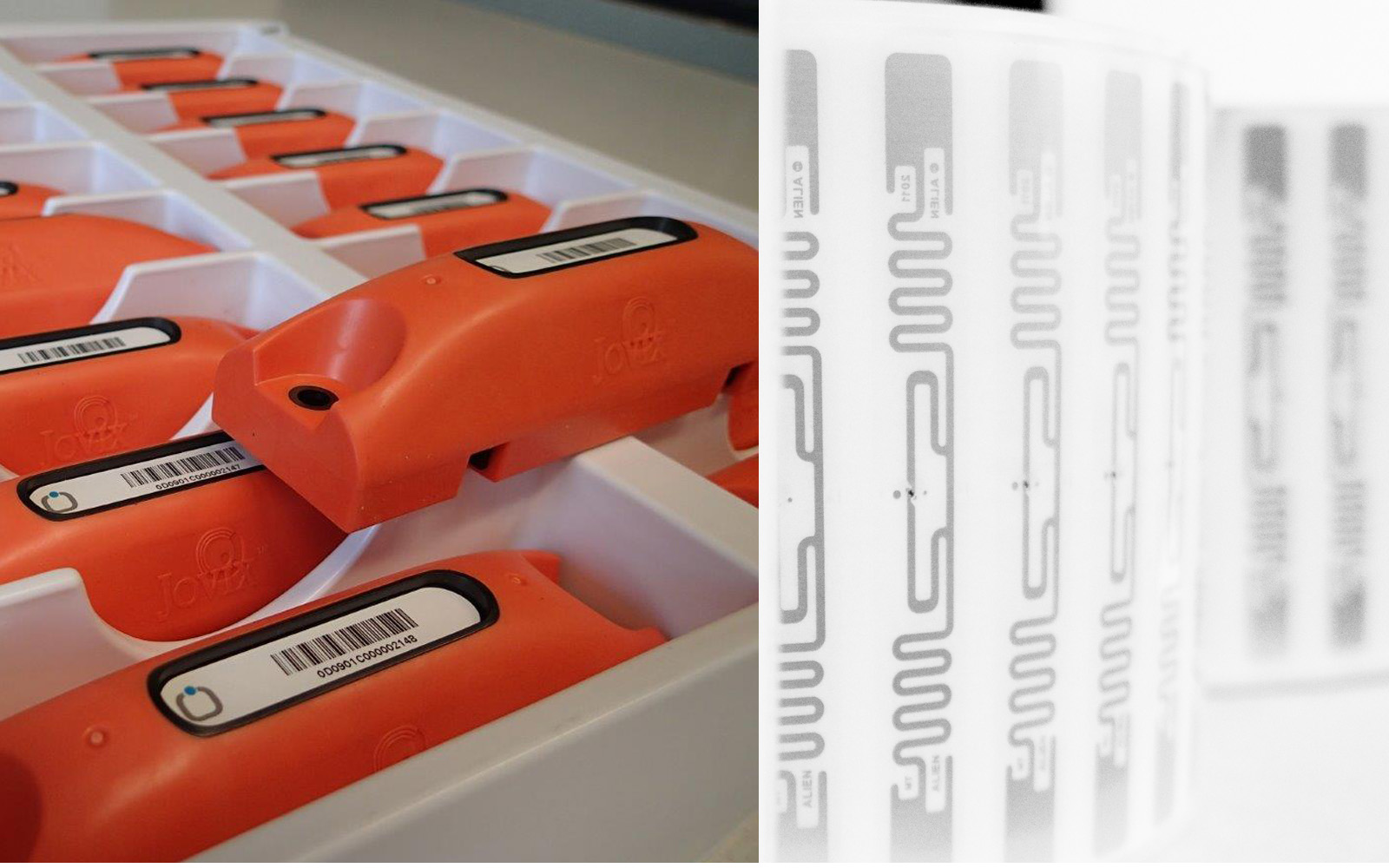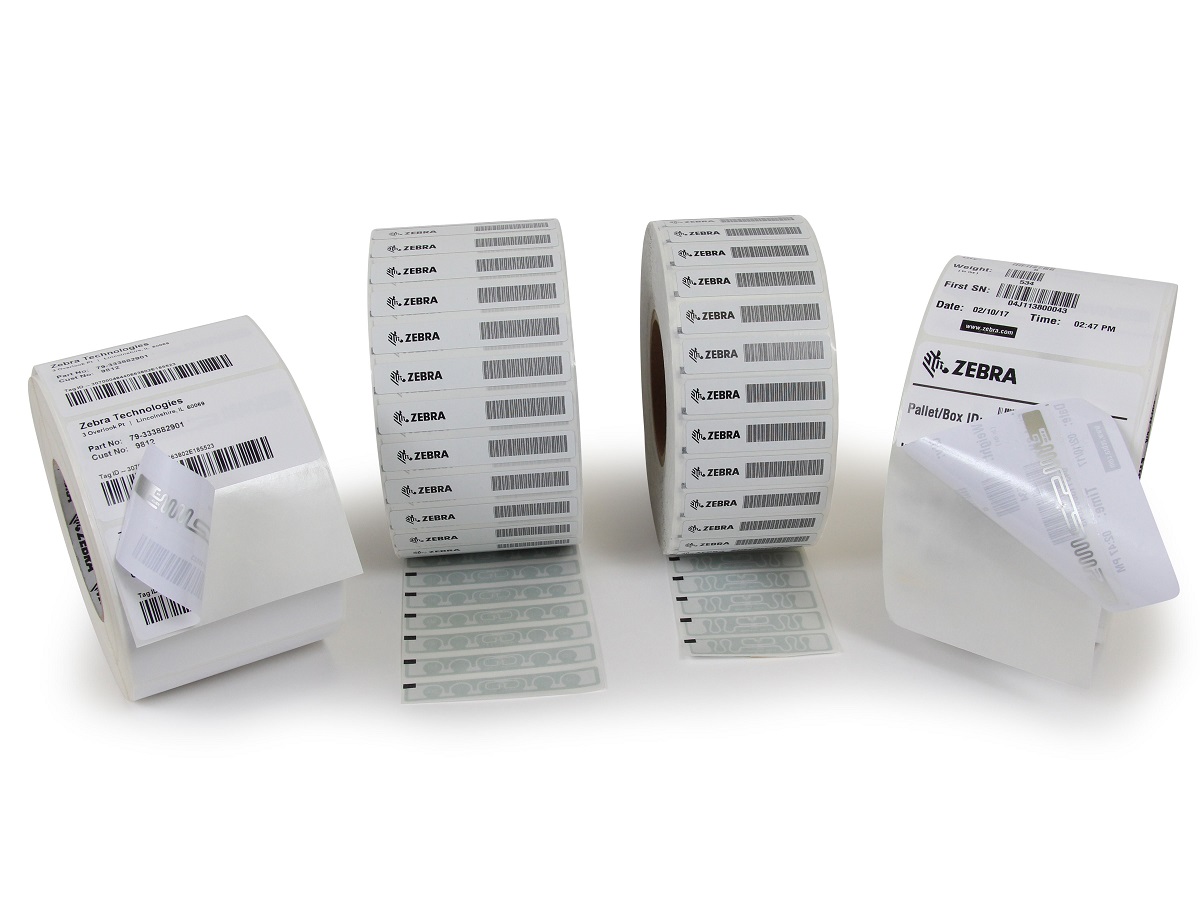Introduction
RFID, or Radio Frequency Identification, is a technology that has revolutionized various industries by enabling seamless tracking and identification of objects and individuals. Among the different types of RFID tags, passive RFID tags are widely used for their cost-effectiveness and simplicity.
Passive RFID tags do not require a power source of their own and instead rely on the electromagnetic energy emitted by an RFID reader to power them. This makes them lightweight and affordable, making them suitable for a wide range of applications such as inventory management, supply chain tracking, access control, and asset tracking.
Understanding the effective range of a passive RFID tag is crucial for optimizing their performance and ensuring accurate tracking. While RFID technology has advanced significantly in recent years, the range of passive RFID tags can vary depending on several factors.
In this article, we will explore the factors that can influence the maximum effective range of a typical passive RFID tag. We will also discuss how to maximize the range of a passive RFID tag and examine the applications and limitations of this technology.
What is a passive RFID tag?
A passive RFID tag is a small electronic device that consists of an integrated circuit (IC) and an antenna. Unlike active RFID tags that have their own power source, passive RFID tags rely on the energy transmitted by RFID readers to operate. When an RFID reader emits a radio frequency signal, the passive RFID tag uses the energy from that signal to power the IC and transmit data back to the reader.
The IC of a passive RFID tag stores information such as a unique identifier or product details. This information can be used for a variety of purposes, including inventory management, theft prevention, and authentication.
Passive RFID tags can be categorized into different types based on their frequency range. The most commonly used frequency ranges are low frequency (LF), high frequency (HF), and ultra-high frequency (UHF). Each frequency range has its advantages and is suitable for different applications.
One of the key advantages of passive RFID tags is their cost-effectiveness. These tags are relatively inexpensive to produce, making them ideal for large-scale deployment. Additionally, passive RFID tags are generally smaller and lighter compared to active tags, making them easier to integrate into various objects and devices.
It is important to note that passive RFID tags have certain limitations. They have a shorter range compared to active RFID tags and are typically read-only, meaning that their data cannot be modified or updated after manufacturing.
In the next section, we will delve deeper into how a passive RFID tag works and the factors that can influence its range.
How does a passive RFID tag work?
A passive RFID tag operates by using electromagnetic fields to transmit and receive data. The working principle of a passive RFID tag can be described in three main steps:
- Energy Harvesting: When an RFID reader emits a radio frequency signal, it creates an electromagnetic field. The passive RFID tag’s antenna catches and absorbs this energy, converting it into electrical power to activate the tag’s integrated circuit. This energy harvesting process eliminates the need for an internal power source in the tag.
- Data Transmission: Once the passive RFID tag’s integrated circuit is powered, it modulates and reflects the incoming radio frequency signal. The reflected signal carries the unique identifying information or other relevant data stored in the tag’s memory. The RFID reader detects and decodes this modulated signal, retrieving the data transmitted by the tag. The data can include item-specific details, such as product information or location data.
- Communication Range: The range at which a passive RFID tag can communicate with an RFID reader depends on various factors. These factors include the frequency range, power output of the reader, antenna design, tag orientation, and physical obstructions between the tag and reader. Generally, the communication range of passive RFID tags can vary from a few centimeters to several meters.
The efficiency and reliability of a passive RFID tag’s operation depend on optimizing the energy harvesting and data transmission processes. Ensuring a strong and consistent power supply from the reader to the tag is crucial for reliable data transmission. Proper alignment and orientation of the tag’s antenna towards the reader also play a role in improving communication range and signal strength.
It is important to note that the data stored in a passive RFID tag is typically static and cannot be modified or updated after manufacturing. However, advancements in RFID technology have led to the development of semi-passive tags, also known as battery-assisted passive (BAP) tags, which can have limited read-write capabilities.
Now that we have explored how a passive RFID tag works, let us delve into the various factors that can affect its range in the next section.
Factors that affect the range of a passive RFID tag
The maximum effective range of a passive RFID tag can be influenced by several factors. Understanding these factors is crucial for optimizing the performance of RFID systems and ensuring reliable data transmission. Here are some key factors that can affect the range of a passive RFID tag:
- Frequency range: The frequency range of an RFID system can significantly impact the range of a passive RFID tag. Generally, higher frequency ranges, such as UHF, offer longer reading distances compared to lower frequency ranges like LF. However, the effectiveness of the specific frequency range can also be influenced by environmental factors and interference.
- Reader power output: The power output of the RFID reader also plays a crucial role in determining the range of a passive RFID tag. Higher power output from the reader can facilitate longer reading distances. However, it’s important to strike a balance, as excessively high power output can cause interference and reduce overall system performance.
- Antenna design: Both the tag’s antenna and the reader’s antenna contribute to the range of a passive RFID system. The design, size, and orientation of the antennas can affect the signal strength and coverage area. Antenna alignment is especially important, as misalignment can lead to weaker signal reception and reduced range.
- Tag orientation: The orientation of the passive RFID tag relative to the reader can impact its range. Ideally, the tag’s antenna should be aligned parallel to the reader’s antenna for optimal signal reception. Any deviation in alignment can result in weaker signals and reduced tag readability.
- Environmental factors: The physical environment in which the RFID system operates can affect the range of a passive RFID tag. Factors such as metallic objects, dense materials, humidity, and temperature can attenuate or reflect radio frequency signals, leading to signal degradation and reduced range.
It is important to consider these factors when designing and implementing an RFID system to ensure maximum range and reliable performance. By optimizing the frequency range, reader power output, antenna design, tag orientation, and accounting for environmental factors, the range of a passive RFID tag can be effectively enhanced.
Next, we will explore the typical maximum effective range of a passive RFID tag in various applications.
Typical maximum effective range of a passive RFID tag
The maximum effective range of a passive RFID tag can vary depending on several factors, including the frequency range, reader power output, antenna design, and environmental conditions. While it is difficult to provide an exact range that applies universally to all passive RFID tags, we can discuss the general ranges observed in different applications.
In low frequency (LF) RFID systems, the typical maximum range for passive RFID tags ranges from a few centimeters to a couple of meters. LF systems operate in the range of 125 kHz to 134 kHz and are commonly used for applications requiring close proximity reading, such as access control or animal tracking.
High frequency (HF) RFID systems, operating in the range of 13.56 MHz, provide a slightly extended range compared to LF systems. The maximum effective range of HF passive RFID tags is typically between one to three meters. HF RFID is commonly used in applications like contactless payment, library book tracking, and asset management.
Ultra-high frequency (UHF) RFID systems offer the longest range among the three frequency ranges discussed. UHF systems operate in the range of 860 MHz to 960 MHz and provide a maximum effective range ranging from a few meters to over ten meters. UHF passive RFID tags are widely used in applications such as inventory management, supply chain tracking, and retail asset tracking.
It is important to note that the maximum effective range of passive RFID tags can vary significantly based on other factors like reader power output and antenna design. In some cases, specialized RFID readers with higher power output and carefully designed antenna setups can achieve longer reading distances, even up to several dozen meters in ideal conditions.
Furthermore, it is important to consider that the typical maximum effective range mentioned above is not a hard limit. Range can be optimized by adjusting various parameters, such as increasing the reader power output, utilizing more sensitive antennas, and ensuring proper tag orientation.
Overall, it is essential to consider the specific requirements of the RFID application when determining the expected range for a passive RFID tag. By understanding the frequency range, power output, antenna design, and environmental conditions, it is possible to optimize the range and performance of a passive RFID system.
In the next section, we will discuss how to maximize the range of a passive RFID tag.
How to maximize the range of a passive RFID tag
To maximize the range of a passive RFID tag, several considerations should be taken into account. By optimizing various factors in the RFID system, the range can be extended, leading to improved performance and increased read distances. Here are some strategies to maximize the range of a passive RFID tag:
- Choose the appropriate frequency range: Selecting the right frequency range for the RFID system is crucial. Higher frequency ranges tend to offer longer reading distances compared to lower frequency ranges. Evaluate the specific requirements of your application and choose the frequency range accordingly.
- Ensure optimal reader power output: Increasing the power output of the RFID reader can enhance the range of the passive RFID tag. However, be cautious not to exceed the regulations or cause interference with other devices. Invest in RFID readers with adjustable power output settings and optimize them based on your specific needs.
- Implement suitable antenna design: Both the tag’s antenna and the reader’s antenna should be carefully designed to maximize the range. Consider using antennas with higher gain and proper beamwidth to improve signal strength and coverage area. Align the antennas properly and ensure that the tag’s antenna is parallel to the reader’s antenna to optimize signal reception.
- Optimize tag orientation: Proper tag orientation plays a crucial role in range optimization. Align the passive RFID tag in a way that its antenna is perpendicular to the reader’s antenna. This alignment allows for better signal reception and reduces the chance of weak or lost signals.
- Consider tag positioning and environment: The physical positioning of the passive RFID tags and the environment can impact their range. Minimize obstructions and ensure that there are no metal objects or dense materials blocking the signal path. Conduct a site survey and evaluate the impact of environmental factors such as humidity and temperature on the RFID system’s performance.
- Employ RFID repeaters or amplifiers: In cases where increased range is required but challenging to achieve due to environmental factors or limitations, consider using RFID repeaters or amplifiers. These devices can strengthen the signal and extend the reading range, allowing for more flexible deployment options.
By implementing these strategies, it is possible to maximize the range of a passive RFID tag and optimize the overall performance of the RFID system. However, it is important to note that range optimization may require a balance between increased power output, proper antenna design, and regulatory compliance.
In the next section, we will explore the applications and limitations of passive RFID technology.
Applications and limitations of passive RFID technology
Passive RFID technology has found widespread applications across various industries due to its cost-effectiveness and versatility. Here are some key areas where passive RFID technology is commonly utilized:
- Inventory management: Passive RFID tags are extensively used in inventory management systems, enabling accurate and efficient tracking of items in warehouses, retail stores, and supply chain operations. These tags allow for quick and automated inventory counts, reducing human error and improving inventory accuracy.
- Supply chain tracking: Passive RFID technology plays a crucial role in supply chain management, allowing for real-time tracking of goods and ensuring efficient logistics operations. By attaching passive RFID tags to products and shipments, businesses can monitor their movement throughout the supply chain, enhancing visibility and improving overall efficiency.
- Access control and security: Passive RFID tags are widely used for access control systems in various settings, such as office buildings, parking lots, and gated communities. These tags can be incorporated into access cards or key fobs, enabling secure and convenient entry for authorized individuals.
- Asset tracking: Passive RFID tags are utilized in tracking and managing valuable assets, such as equipment, vehicles, and IT assets. By affixing passive RFID tags to these assets, organizations can monitor their locations, track maintenance activities, and prevent loss or theft.
- Authentication and anti-counterfeiting: Passive RFID technology is used to authenticate products and prevent counterfeiting. By embedding passive RFID tags with unique identifiers and encryption capabilities, manufacturers and consumers can authenticate the origin and integrity of products, ensuring authenticity and combating counterfeiting.
Despite the wide range of applications, passive RFID technology is not without its limitations. Here are a few notable limitations:
- Range constraints: Compared to active RFID tags, passive RFID tags generally have shorter reading distances. While range optimization strategies can help enhance their performance, the limited range can still be a constraint in certain applications.
- Data storage limitations: Passive RFID tags typically have limited data storage capacity compared to other technologies. They are primarily used for transmitting unique identifiers or limited information. If extensive data storage or read-write capabilities are required, other technologies may be more suitable.
- Interference and signal attenuation: Environmental factors such as metallic objects or dense materials can interfere with RFID signals, leading to reduced performance and range limitations. It is essential to consider the environment and potential sources of interference when deploying passive RFID systems.
- Cost considerations: While passive RFID tags are generally more affordable compared to active or semi-passive tags, costs can still be a consideration, especially for large-scale deployments. The cost of readers, infrastructure setup, and tag implementation should be evaluated for each specific application.
Despite these limitations, passive RFID technology continues to evolve and find innovative applications across various industries, offering significant advantages in terms of efficiency, automation, and cost-effectiveness.
In the next section, we will conclude our discussion on passive RFID technology.
Conclusion
Passive RFID technology has revolutionized the way objects and individuals are tracked and identified across a wide range of industries. This cost-effective and versatile technology relies on the energy emitted by RFID readers to power and transmit data from passive RFID tags.
Throughout this article, we discussed the working principle of passive RFID tags, the factors that influence their range, and strategies to maximize their performance. We explored the typical maximum effective range of passive RFID tags in different frequency ranges and discussed their applications in inventory management, supply chain tracking, access control, asset tracking, authentication, and anti-counterfeiting.
While passive RFID technology has numerous advantages, it is important to acknowledge its limitations. The range constraints, limited data storage capacity, potential interference, and cost considerations should be taken into account when planning and implementing passive RFID systems.
As technology continues to advance, passive RFID technology is expected to evolve further, overcoming its limitations and opening up new possibilities for implementation in various industries. Innovations in tag design, reader capabilities, and system integration will continue to enhance the performance and range of passive RFID tags.
In conclusion, passive RFID technology offers a cost-effective and efficient solution for tracking and identification in numerous applications. By understanding the factors that affect the range of passive RFID tags and implementing optimization strategies, businesses can harness the full potential of this technology to streamline operations, improve security, and enhance overall efficiency.







